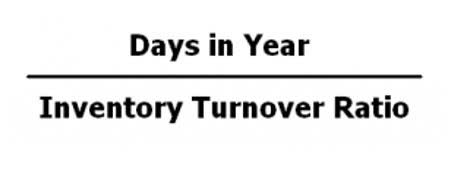This guide covers the basics of net income and how to calculate it. Our focus is business net income, although net income and net worth may also apply to personal finance. This website is using a security service to protect itself from online attacks. There are several actions that could trigger this block including submitting a certain word or phrase, a SQL command or malformed data.
This is information that can be taken from a cash flow statement. Learn about cash flow statements and why they are the ideal report to understand the health of a company. The net income calculation can be broken down into 5 separate net income formulas used in a multi step income statement, as shown in this linked Tipalti article. Net income is typically found on a company’s income statement, which is also called a Profit and Loss statement. As an investor, you can see this for yourself through a company’s financial filings with the SEC. If you’re a business owner, you can typically see this using most accounting softwares.
EBITDA is different from net income, however; the latter of which includes all costs and expenses. The net income is very important in that it is a central line item to all three financial statements. While it is arrived at through the income statement, the net profit is also used in both the balance sheet and the cash flow statement.
“Net income sheds light on how well the business is run,” Tsang says. When you look only at revenue, you’re not looking at the big picture costs of running a business or its profitability. Similar to how you can’t just look at your individual income to assess your personal financial wellbeing (looking at net worth is a better indicator).
The Importance of Net Income to Your Business
It could mean that expenses are too high, income is too low, or both. You’ll usually find your business’ COGS listed near the top of your income statement, just under revenues. The first part of the formula, revenue minus cost of goods sold, is also the formula for gross income. (Check out our simple guide for how to calculate cost of goods sold). Although many small businesses don’t start calculating their profitability until they’re forced to by a lender or investor, keeping track of your net income is one of the best ways to monitor the financial health of your business.
If there is no mention of dividends in the financial statements, but the change in retained earnings does not equal net profit, then it’s safe to assume that the difference was paid out in dividends. Net income is one of the most important line items on an income statement. Your monthly income statement tells you how much money is entering and leaving your business. An up-to-date income statement is just one report small businesses gain access to through Bench. Income statements—and other financial statements—are built from your monthly books.
That gain might make it appear that the company is doing well, when in fact, they’re struggling to stay afloat. Operating net income takes the gain out of consideration, so users of the financial statements get a clearer picture of the company’s profitability and valuation. Also referred to as “net profit,” “net earnings,” or simply “profit,” a company’s net income measures the company’s profitability. Net income is the opposite of a net loss, which is when a business loses money.
The net loss may be shown on an income statement (profit and loss statement) with a minus sign or shown in parentheses. A company with positive net income is more likely to have financial health than a company with negative net income. The net profit margin metric, which divides net income (net profit) by total revenues on the company’s income statement is 9.4%. Net income reflects the actual profit of a business or individual. Assuming there are no dividends, the change in retained earnings between periods should equal the net earnings in those periods.
Calculating net income and operating net income is easy if you have good bookkeeping. In that case, you likely already have a profit and loss statement or income statement that shows your net income. Your company’s income statement might even break out operating net income as a separate line item before adding other income and expenses to arrive at net income.
How to Calculate Net Income
While net income is synonymous with a specific figure, profit can refer to many figures depending on what costs and expenses have been deducted. Profit simply means revenue that remains after expenses, and corporate accountants calculate profit at many levels. Net income, also called net profit or net earnings, is a concrete concept; the figure that most comprehensively reflects a business’s profitability and is used in publicly traded companies to calculate their earnings per share (EPS).
Keep in mind that COGS doesn’t include indirect expenses (also called ‘overhead’ ‘operating costs’ or ‘operating expenses’). These operating expenses include things like salaries for lawyers, accountants, management, administrative expenses, utilities, insurance, and interest. Also called gross earnings or gross profits, gross income is your revenues minus your cost of goods sold (COGS), which are the direct expenses involved in producing your products or services. For an independent contractor, gross income includes the amount of money for client revenue that’s paid to them in a calendar year and reported on a payer’s 1099 form that relates to their submitted W-9 form.
This gives them a better idea of how profitable the company’s core business activities are. Therefore, EBIT is not the last line of the income statement, as is net income. As a variation of EBIT, EBITDA is earnings before interest, taxes, depreciation, and amortization. For individuals, depreciation depletion amortization your salary is a source of income disclosed on a personal financial statement and a component of your gross income on a tax return. For our net income example, the following annual financial results for Exampt Inc. (not a real company) are assumptions to calculate its net income.
- Another name for the subtotal operating income is operating profit, which measures a company’s profitability from operating activities.
- “Earnings per share is the net profit divided by the number of outstanding shares. If the company has issued any preferred stock, they’ll subtract those preferred dividends as well,” says Nate Tsang, founder and CEO at WallStreetZen.
- Net income can give you an overall idea of the health of a business, because it shows profits after all deductions are taken out.
- Income statements—and other financial statements—are built from your monthly books.
- “Net income also doesn’t include capital expenditures. A given business could have a pretty high net income relative to their earnings but in reality be hemorrhaging cash.”
When basing an investment decision on NI, investors should review the quality of the numbers used to arrive at the taxable income and NI to ensure that they are accurate and not misleading. Earnings before interest, taxes, depreciation, and amortization https://www.bookkeeping-reviews.com/loans-and-grants/ (EBITDA) is a metric used to gauge a company’s profitability before those items have been taken into consideration. Profit, however, can be viewed in many different ways, depending on what costs and expenses have been deducted from revenues.
We and our partners process data to provide:
In businesses using a multi step income statement, gross profit less cost of goods sold (COGS) is calculated, with a financial statement subtotal line of gross profit before operating expenses are subtracted. Net income (profit after taxes or net profit) is the residual amount on an income statement after subtracting costs and expenses from net revenues for the accounting period. The costs and expenses to subtract from revenues are cost of goods sold, categorized operating expenses, net interest expense and any other non-operating expenses, and income taxes. Profit is the amount of revenue left after certain expenses have been deducted and can be reported at different levels, such as gross profit and operating profit. Net income, or net earnings, is the bottom line on a company’s income statement. It’s calculated by subtracting expenses, interest, and taxes from total revenues.
Net income relationship with operating income
They can choose the same cash method for business financial statements to maintain only one set of books. The IRS sets the rules for allowing cash method accounting for income taxes. Ask your CPA firm to determine the right accounting method for your company. Net income is a key metric for assessing the health of a business and signifies the profit a company earns after the total of all deductions and expenses are subtracted from total revenue.

 March 26th, 2024
March 26th, 2024 





